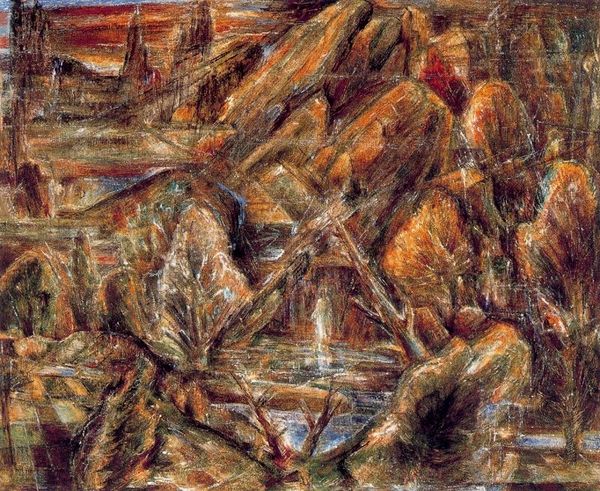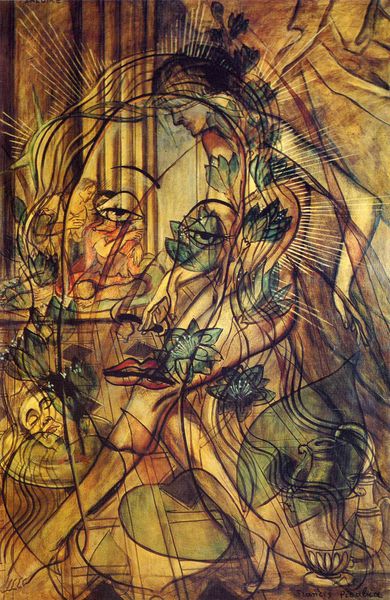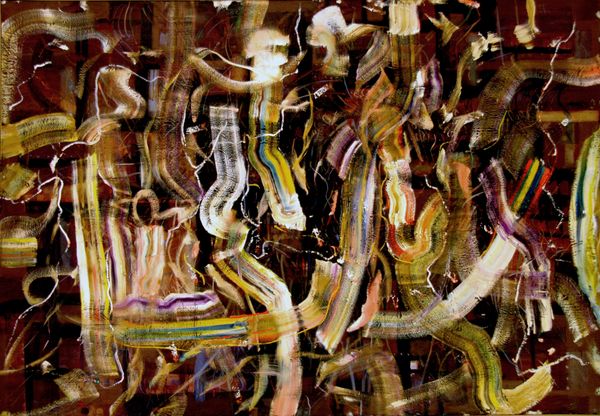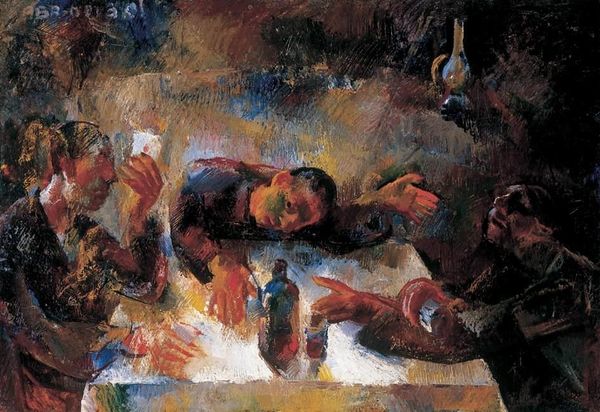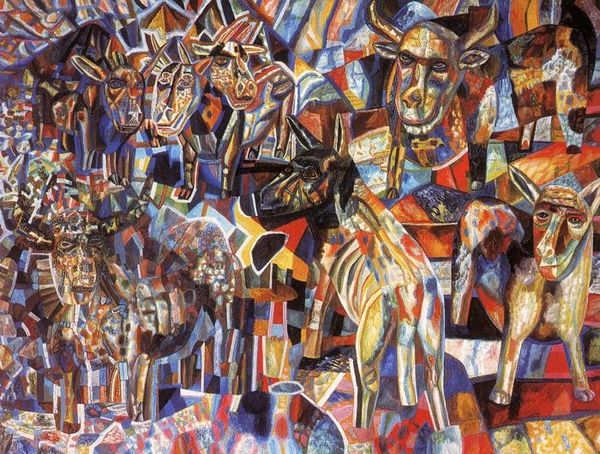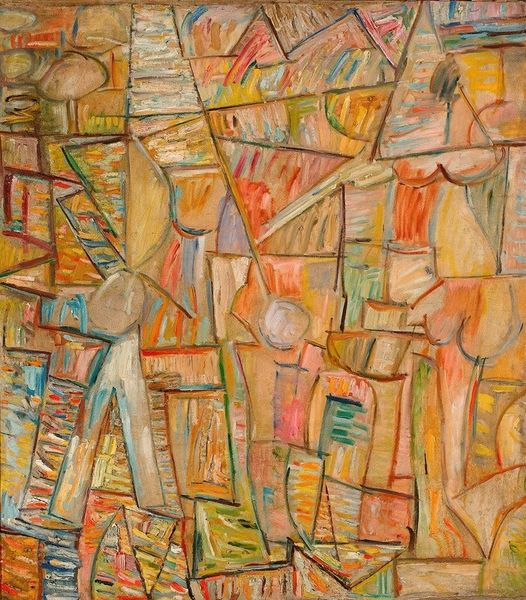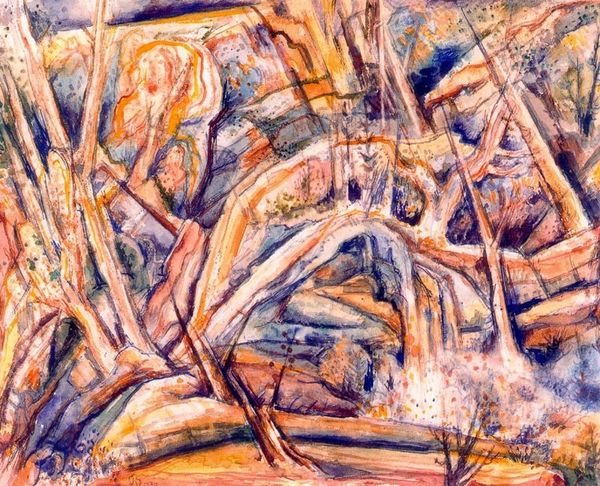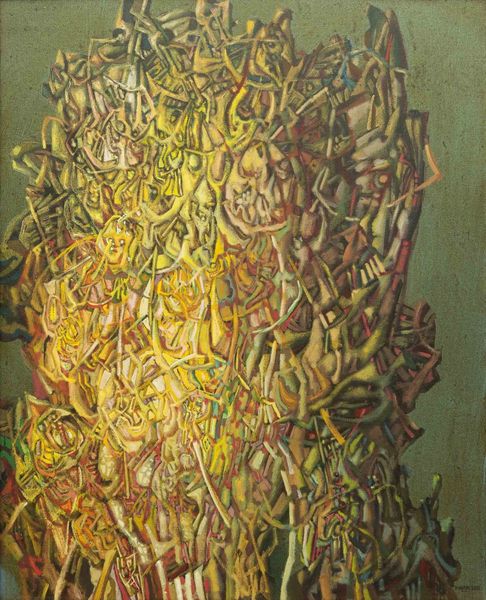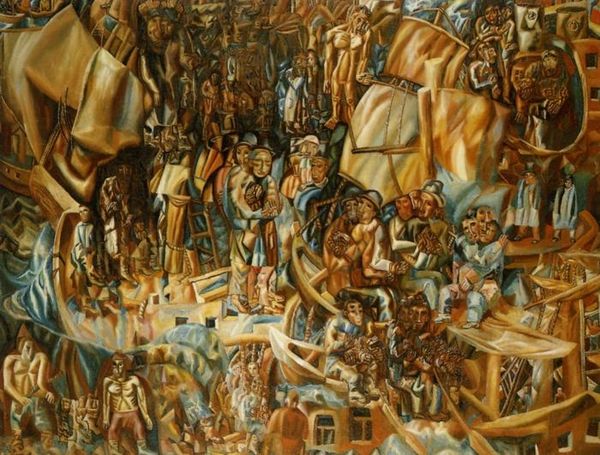
painting, oil-paint
#
portrait
#
abstract painting
#
painting
#
oil-paint
#
figuration
#
geometric
#
expressionism
#
russian-avant-garde
#
expressionist
Copyright: Public domain
Curator: Let’s turn our attention to Pavel Filonov’s "A Couple," painted in 1912. What strikes you first? Editor: The fragmented forms. The canvas feels utterly dissected, reassembled into a whirlwind of geometric shapes and semi-recognizable figures. There's a powerful sense of discord and instability in these brushstrokes and color combinations. Curator: Indeed. Filonov, a key figure in the Russian avant-garde, was deeply invested in exploring the social and political upheavals of his time. Look closer. Can you discern individual elements? Editor: Vaguely. There appears to be a pair, maybe two, central figures near the upper section. I am able to recognize that only after carefully looking at it and re-assuring myself it is really a figure. But overall it is all just chaotic fragments and shades of brown, umber, a tad of orange. It's difficult to grasp anything solid, anything permanent. The whole feels…broken. Curator: Precisely. Filonov embraced analytical cubism and what he termed "analytical realism" - a method to display the inner psychological state and world-view, the "invisible" aspects of things. "A Couple", from this vantage, isn't merely a representation of two people, but the complex, often conflicting forces that define human relationships amid social anxieties and transformation. Editor: I notice that the lack of a singular vanishing point denies the eye a resting place. I see in this the fracturing of not just form, but of any clear, cohesive meaning. This seems intentional. Do you think it works effectively? Curator: Absolutely. Filonov aimed to dismantle conventional perceptions and power structures. His style reflects a radical rejection of the artistic canon. "A Couple" becomes a potent statement against the established norms, embracing change, even the potential anxieties that change evokes in the individuals represented. I find that exciting. Editor: Fascinating how what seems like a jumble of forms on initial view actually articulates deeper levels of tension. Thank you, this exercise allowed me to appreciate what before was just a complicated, confusing picture. Curator: I think the conversation between historical conditions and abstract artistic responses reveals that an artwork is always communicating ideas to a viewer.
Comments
No comments
Be the first to comment and join the conversation on the ultimate creative platform.

